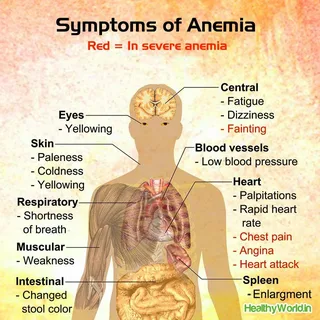
India’s public health landscape is plagued by anaemia, which affects nearly half of the population. Many people’s health and well-being are negatively impacted, and their potential is hindered as a result of its negative impact, which exists as a subtle undercurrent. The individual’s physical and mental productivity are affected by this seemingly innocuous but stubborn condition, which is characterized by a lack of red blood cells. The good news, however, is that the disorder can be prevented and treated with affordable, science-based solutions. Currently, programs to lower anaemia levels offer testing, treatment, and preventative micronutrient supplementation, particularly for women, adolescents, and children. At the same time, each of us—as individuals, families, and communities—must take steps to prevent this widespread disease if we want to improve the quality of our lives and reach our full potential.
If anaemia is present, it can be quickly treated with a routine annual blood test and early treatment start. Considering the sheer size of weakness in India, it is conceivable that the condition might be available in any of us, which is a significant reason to worry. This condition affects more than half of all women between the ages of 15 and 49, including pregnant women and young women. It likewise influences 67% of kids under five years and 25% of men. It can impede crucial cognitive development in children, resulting in a possible 11-14 IQ point loss. This results in reduced learning potential, which has an effect on their academic trajectory and opportunities for the future. Adults with anaemia frequently struggle with constant fatigue, a persistent sense of weakness, and a lack of vitality, which hinders their ability to effectively complete daily tasks. Anaemia increases the risk of complications during pregnancy, such as preterm birth and low birth weight babies.
The impact of anaemia goes far beyond individual health and has a significant financial impact on the healthcare system. While lost efficiency converts into diminished pay acquiring potential, expanded medical services costs related with treating sickliness and its entanglements further strain family funds and public medical services financial plans.
Iron deficiency and other deficiencies in essential vitamins and minerals are the most common causes of anaemia, and this is where a well-balanced diet comes into play. We might review our grandparents’ emphasis on consuming a different exhibit of heartbeats, grains, vegetables and organic products. We were unknowingly given a potent weapon against anaemia through this seemingly straightforward practice of encouraging dietary diversity. This variety isn’t simply about assortment for the good of its own; it ensures that a wide range of nutrients that are necessary for good health are consumed.
In this context, species richness is also important because it indicates the need to seek out diverse nutrient sources. Micro and macro nutrients, in addition to a variety of other beneficial compounds, are found in varying amounts in each food. A varied diet can provide our bodies with a wider range of nutrients, including iron, to combat anaemia more effectively than eating the same foods over and over again.
This methodology and guidance are in finished sync with nearby, occasional, and conventional food rehearses. There is a plethora of regional cuisines in India, each with its own distinct wisdom that has been passed down through the generations. Vegetables in the summer and the winter are very different, and traditionally, our diets change with the seasons. By guaranteeing that these dependable practices reflect in your eating regimen, we can accomplish species extravagance normally.
However, the fast-paced modern world frequently makes it difficult to adhere to healthy eating habits. Constraints on time, packed schedules, and readily available processed foods can result in diets devoid of vital nutrients. In this unique situation, sustained food varieties like rice, salt, and flour arise as quiet legends. These staples, improved with iron and different micronutrients, can fundamentally add to connecting the nourishing hole and fighting lack of iron weakness.
In recent years, the government has made significant progress in recognizing the significance of fortified foods. They have sent off drives pointed toward making braced choices promptly accessible through open dissemination frameworks and on the lookout. As consumers, we must actively seek out these fortified options and incorporate them into our diets because advancements in fortification technology ensure that these options are indistinguishable from their non-fortified counterparts.
Anaemia can be quickly and successfully treated with varied, nutritious diets and a food systems approach that ensures everyone has access at reasonable costs. Everyone, including farmers, will benefit from dietary and crop diversity, which will also contribute to Viksit Bharat as a whole. Annual health checks make it simple to maintain haemoglobin levels, and numerous treatment options are available. A health care professional should be consulted for further investigation if a varied and healthy diet and iron supplementation do not improve anaemia, which is an important indicator of overall health.
Individuals, communities, and the government all need to work together to combat anaemia. Although the government of India’s Anaemia Mukt Bharat initiative is a commendable step in this direction, individual efforts are essential to ensuring that anaemia is effectively reduced throughout the nation. Joining blood testing with a decent eating regimen wealthy in different supplement rich food varieties can have a significant effect to every one of us and the country in general.





